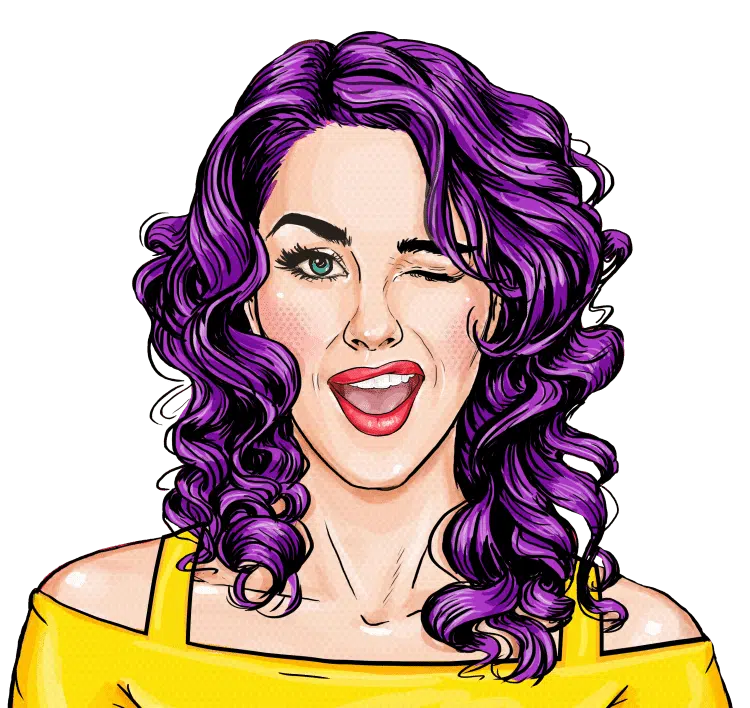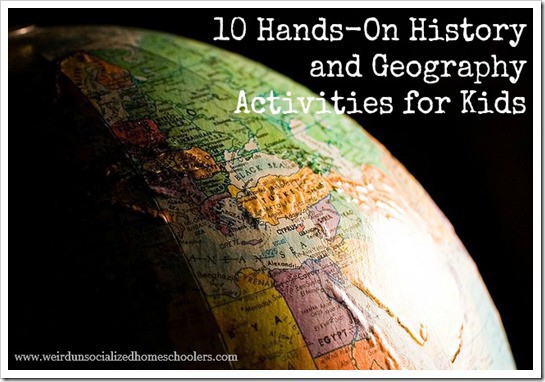10 Hands-On History and Geography Activities for Kids
If you enjoyed these 10 hands-on science activities for kids, you might also love these hands-on history and geography activities for kids!
1. Make costumes.
I am not the world’s best at this. I am not a seamstress at all. However, anytime we’ve ever made costumes, it’s been something the kids have really enjoyed and remembered. We did simple kimonos when we studied Japan. And, when we did a study of the Middle Ages, we just happened to have some great medieval costumes that my in-laws picked up cheap after Halloween one year.
2. Prepare a meal.
I love studying history, culture, and geography with food. It can be something as elaborate as preparing a traditional meal when studying a country or period in history to making artichoke dip when learning about California. (Castorville, California is known as the “Artichoke Capital of the World.”)
3. Make a map.
We love making maps to study history and geography. Salt dough, cookie dough, and paper mache are just a few options. And, if you want just a bit more detail on your salt dough map, check out this map of South America.
4. Play games.
There are many games that truly are great fun and that also teach history and geography. Stack the States and Stack the Countries are a couple of examples. Even older children and teens love these! (Isn’t it lovely when education is fun?!) We also enjoy lots of other board games and card games like these.
5. Make a model.
Just as models are a great way to get hands-on with science, they’re great for history and geography, too. You can build a paper mache Leaning Tower of Pisa or a log cabin out of Lincoln Logs or pretzels.
6. Create artwork.
Learning about and replicating the artwork from a culture or a period in history is a great way to learn about people, places, and events. If you need some ideas, Geography Through Art is a good place to start. There are also all kinds of craft and activity books available from the library.
7. Become a Flat Traveler.
My kids have enjoyed “traveling” both throughout the United States and abroad. Becoming a Flat Traveler is a fun way to learn about other places – especially since it involves getting mail, which most kids really enjoy. In addition to learning about other places, it gives you an incentive to learn more about your own city, state, or country.
8. Act it out.
Kids can learn so much from acting out what they’re learning. You can recreate moments in history with action figures, dolls, homemade puppets (paper dolls or printouts on craft sticks) or the kids can act it out themselves. Boys like this when it involves battle scenes. {grin}
9. Create a timeline.
Seeing how everything fits together can make history make so much more sense. Seeing the world events that caused or were affected by wars or which historical figures lived through during the same time periods often causes an “aha” moment that cements an idea in a person’s mind in a way that scattered, random bits of information could never do. Timelines are a great way to tie it all together. Homeschool in the Woods is a great place to look for timeline helps and information.
10. Don’t forget the books.
Biographies, historical fiction, and literature from the time period being studied top my list of favorite ways to study history.
What are some of your favorite hands-on activities for history and geography?




Our all-time favorite hands-on history project was a Medieval Feast we had while learning about the Medieval Ages. The kids studied the duties of the servants and entertainers abd chose one of each to portray at our feast. We then cooked period dishes, served them in trenchers, and had the guests eat with their hands (Fun!!) It was great fun and educational. My daughter still occasionally makes wassail to this day!
The kids and I are currently making a letterbox (letterboxing.org) to share our learning about lewis and clark. It has been fun to carve the stamps and make a map and we can’t wait to place it and see who shares our learning.
Costumes is one of my favorites. =) I fail at making that happen, but if I could wave my magic wand I’d have a history trunk full of various costume pieces relevant to the time periods we’re studying. Where’s my history fairy?? 😉
These are really great ideas! Thank you!
I saw this in my Pinterest feed so hopped over to link up a list of creative ways to learn geography, too! We share many! And the costume idea is great!
Thanks so much! I have been trying to find ways to make Geography more fun! Great ideas!
Love these activities and ideas. We love history and geography any old way you serve it up and hands-on just makes it better. Thanks for linking to my South America map and sharing!
These are really great ideas. A lot of kids, including me when I was younger, just isn’t interested in Geography or History. Making it fun to learn definitely builds interest and encourages the desire to learn more. I especially like item 7, become a flat traveler. It is nice that today, we have the History Channel. I would think watching one of the episodes and then relating that to the location on an atlas or map would make it more interesting. I’m going to pass on this information to some friends with younger kids!
When teaching EurAsia, my students chose a country to do an indepth project. Each had a penpal from the country. Each wrote business letters to travel agencies requesting information (until it became frrowned upon, they wrote business letters to embassies and received unbelievable and generous materials – money, maps, books). At the conclusion of the project, each student prepared a dish from their country and brought it to school where we celebrated a huge meal together. For learning continents, etc, in Oct they’d decorate a pumpkin as a globe… some even hollowed out the pumpkins and cut the continent shapes! They also made tiny flags of the countries with toothpicks and stuck them into the pumpkins. When studying E/W/Berlin Germany, they drew from a hat which country they were a “citizen” of and a long bookcase separated them from each other… privileges were granted as they might have been in Germany. We always read novels with settings in different countries. Often we had visitors from other countries or people who had visited other countries…one young man on visa from Russia was excellent, sharing pics of his small Russian apt, Babouska dolls, books, newspapers, etc.